Have you ever heard that bit about there being lots of Eskimo words for snow? Eskimos, because they deal with snow so much, supposedly have many more words to describe snow and its nuances. True or not, it is a fact that we more commonly use words for things we experience commonly. So I offer that as an explanation for why I (at least) haven’t really ever heard of hoar frost or a whole variety of other types of garden frost.
Hoar frost doesn’t come up in the weather forecast here in New England. Frost has always just been frost for me. (I mean, I do distinguish a light frost from a hard frost – the difference being how many plants it kills). But I recently came across the hoar frost term, and on further investigation, I learned that not only is there a special kind of frost called hoar-frost, but there are other types of frost, too.
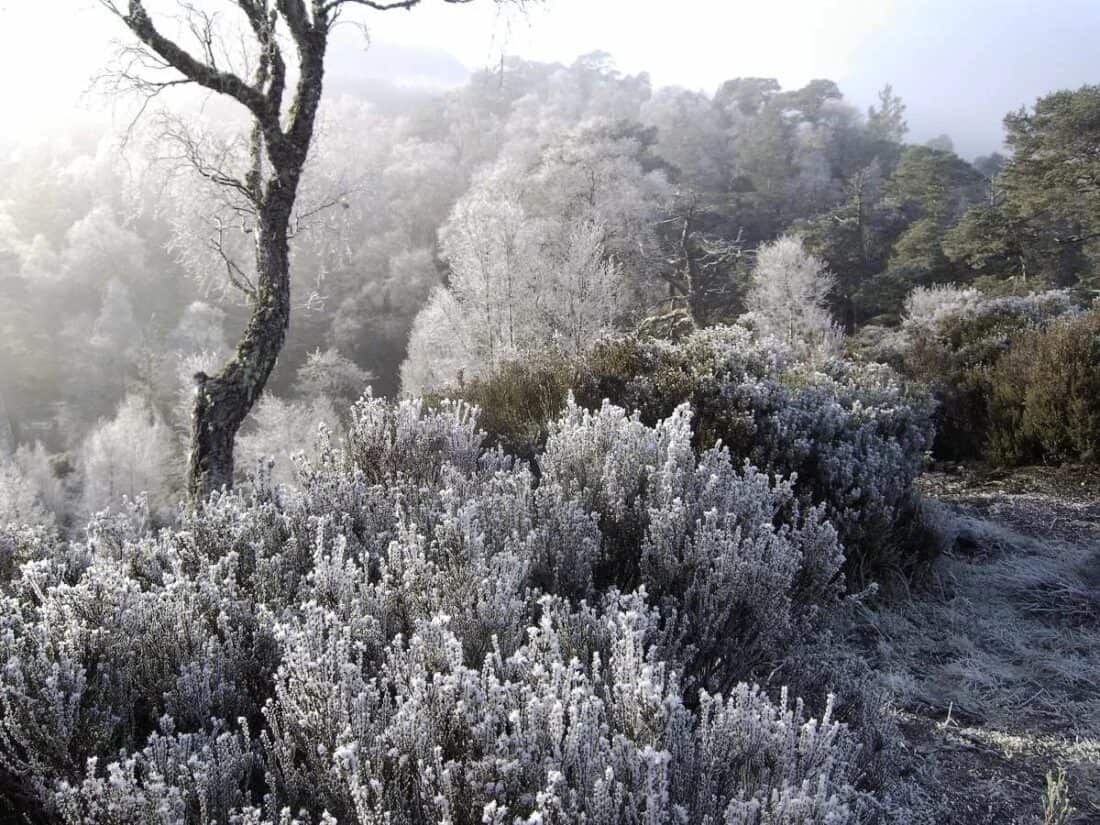
Why am I bringing up all the frostiness?
Well, frost is big talk to garden designers – for a variety of reasons. Most importantly, the arrival and departure of frost in the year defines the beginning and the end of the ‘growing season.’ Most plants can’t grow properly in cold temperatures, so we define the whole gardening season by last and first frost dates.
I’m not going to focus too much on the best way to deal with frost in your garden in this post. Frost is largely considered negative among gardeners because, understandably, a freeze warning causes panic and fear (that precious, vulnerable plants might need emergency protection from cold weather).
I am, however, going to go hard on the upside of frost – it is pretty. And if you think about how it will look on your plants – you can make your winter garden a whole lot more exciting.
Types of Garden Frost
Frost is the white crystals that form when the temperature drops enough to make the humidity in the air condense onto objects in the landscape. The more temperate the climate, the less likely and the less variety of frost you will see. But as a climate has colder temperatures, there is greater opportunity for different types of frost to form. Knowing the types of frost that you get where you live is actually very important if you want to create a safe and magical winter frost garden.
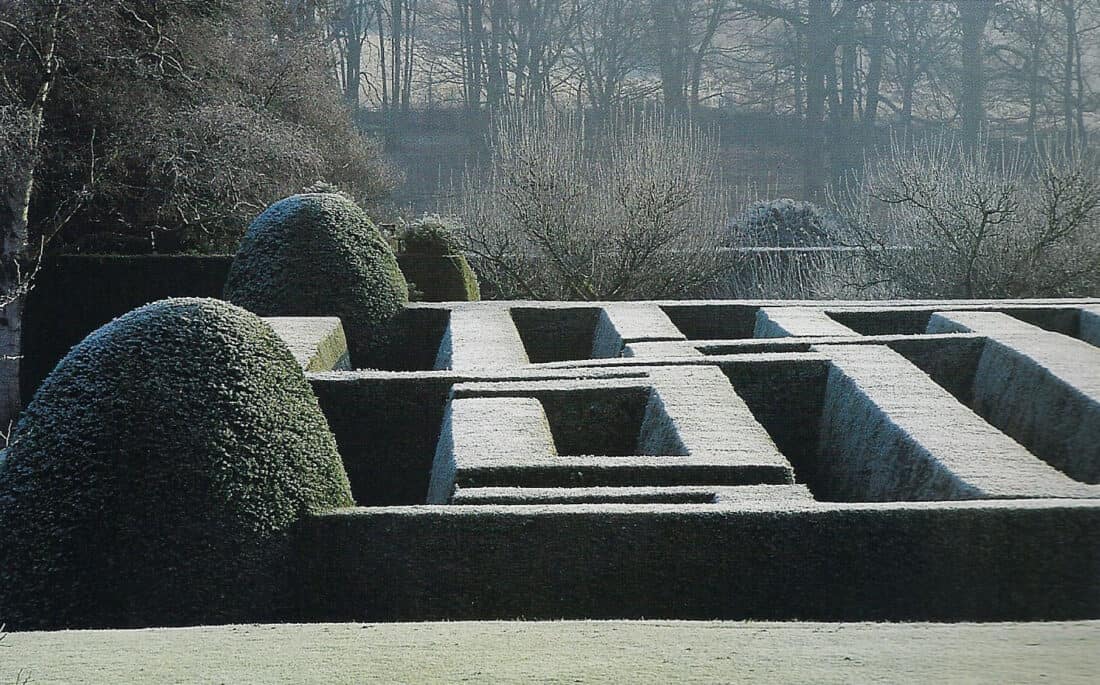
Hoar Frost and White Frost
What is hoar frost? Hoar is a type of radiation frost that forms when the air temperature drop quickly and water vapor in the air forms crystals without going through a liquid phase. In order to get hoar frost, there must be a relatively high level of humidity in the air. We don’t often get hoar frost in New England (presumably because despite our humid summers, winter is very dry). But when I lived in actual England, I noticed it relatively often. I also remember it to be a little more common back home in Colorado – and I suspect it was due to pockets of humidity that can surround melting snow.
White frost and hoar frost are very similar, except that white frost is thicker and, therefore, whiter.
Designing For Hoar Frost and White Frost in the Garden
If you get hoar-frost where you live with any regularity, it is worth considering how you can maximize the pretty frost when planning your garden. Hoar frost is beautiful, and it is best seen in the mornings before the sun melts the crystals. Sculptural plants that persist into the winter are stunning with a coat of hoar-frost. Consider grassy plants with interesting seed heads and distinctive shapes (like clipped hedges and topiaries). Plant them en masse to heighten the effect.
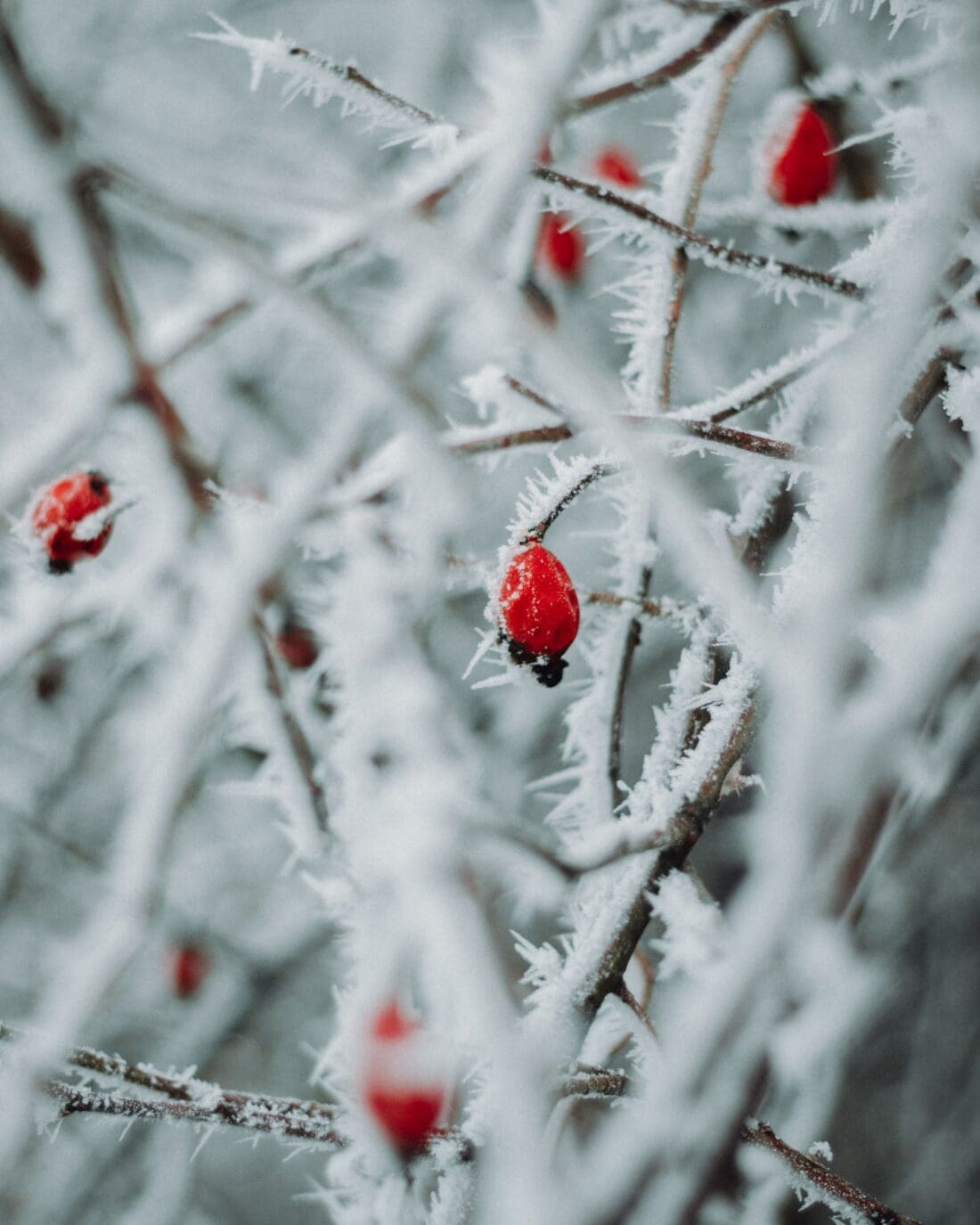
Advection Frost (also called Wind Frost)
Advection frost happens when the cold air that forms the ice crystals moves across a surface in a horizontal direction. This type of frost can be damaging to crops, but it also makes some interesting and pretty effects in the garden. Ice crystals tend to form on the edges of flowers and plant surfaces rather than over the whole leaf or petal, and the crystals are often satisfyingly directional – pointing to where the air moved.
Designing with Wind Frost
If you have prevailing or strong winds in your garden (as I do!), you might notice that trees and large shrubs might already be slightly lopsided – leaning away from the wind source.
The wind in my garden comes up the hill, and anything on that side of the garden is always blown to one side. I have considered planting a hedge or a planted windbreak, and if you have this issue, you may want to consider that as well. A fence (which is a nice windbreak and uses a lot less space) is providing that purpose in one area of my garden already. Or, you can embrace the wind, grow to appreciate the asymmetry it provides, and in the winter, watch for some beautiful and interesting shaped ice crystals.
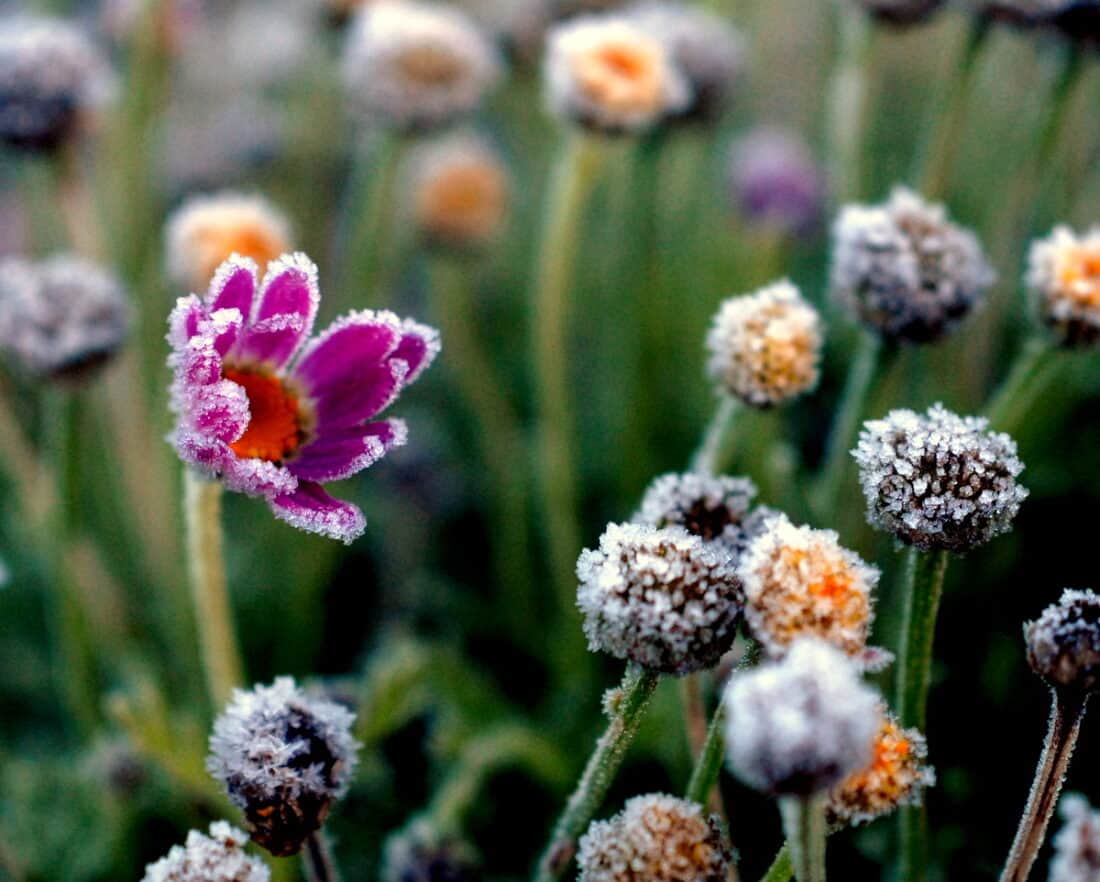
Rime and Glaze Ice
Rime ice is a more substantial version of a hoar that requires liquid water droplets in the air to freeze onto a surface. This allows the ice to grow larger and heavier crystals that can be beautiful but often damage trees, plants, and even structures. Similarly, Glaze ice forms when rain water freezes, and it creates shiny, smooth ice that coats everything and builds up over the course of a storm. Both of these require a unique set of meteorological circumstances, but when it happens, the beauty and the damage are quite dramatic.
Designing your Garden for Rime and Glaze Ice
If you get regular Rime ice or ice storms (like we do in New England), it is wise to cut back (or not plant) pines and trees that overhang structures and power lines. Broken trees tend to bring down overhead power lines, and sometimes, buildings have been known to collapse under the weight of the.
Preventing damage is hard, but some trees (like pines, for example) have a lot of winter surface area (think of all those needles) to hold the ice and can be especially prone to this type of damage.
Think about using plants and trees with strong natural structures and few surfaces in the winter on which ice can gather (i.e., no leaves and no needles).
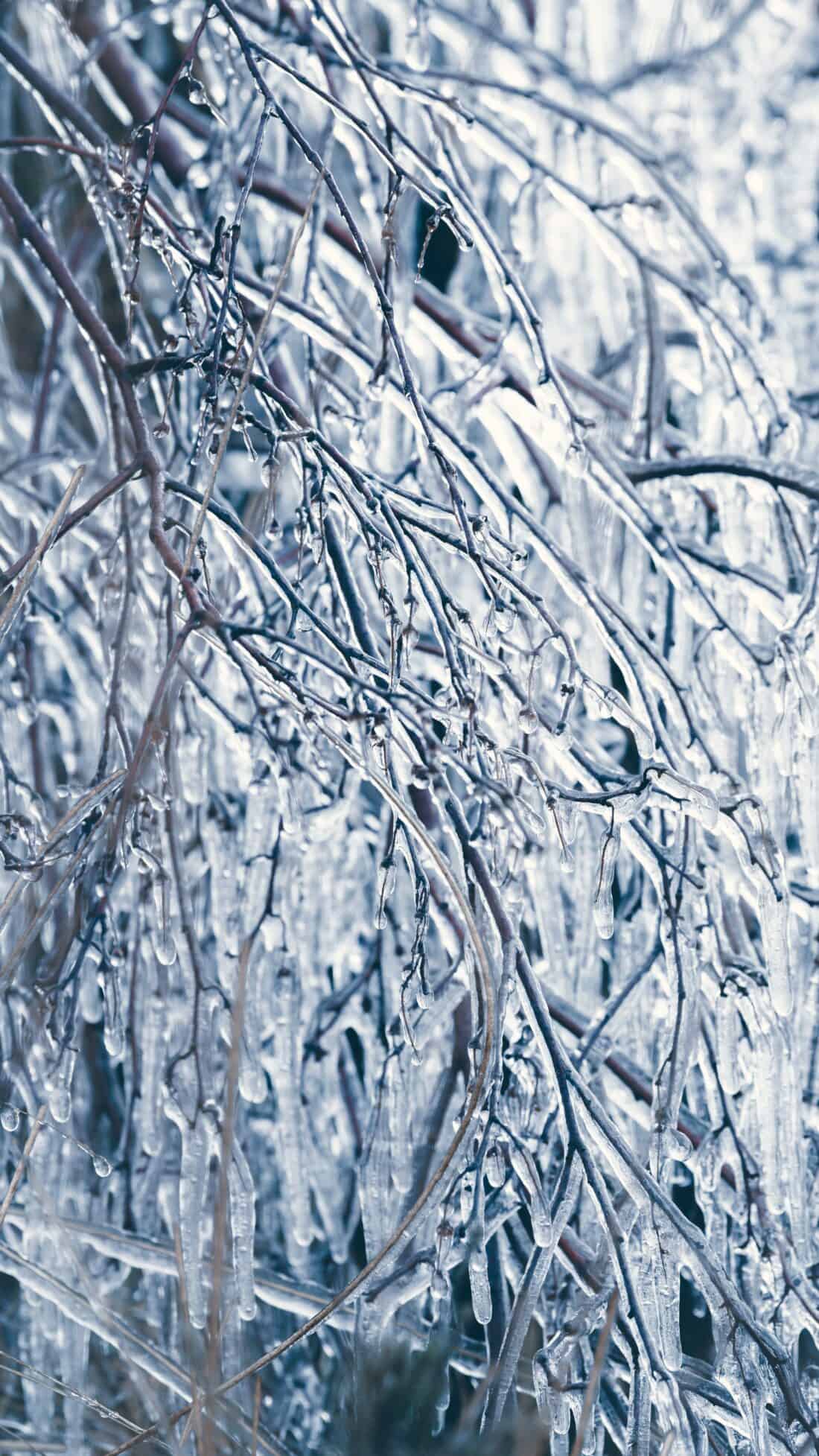
Window Frost and Fern Frost
Window frost and fern frost, also called ice flowers, form on surfaces like windows. Unfortunately, if you regularly get this type of ice on your windows, it means they aren’t well insulated. The flowers and pretty winter patterns are the up-side of a bad energy situation. (when I was a kid, my parents always explained this ice on the windows of our car as a visit from the mythical Jack Frost)
The patterns are caused by a difference in temperature on either side of the glass. Windows aren’t generally in the garden, but you can sometimes see this kind of ice on small ponds, puddles, or water features.
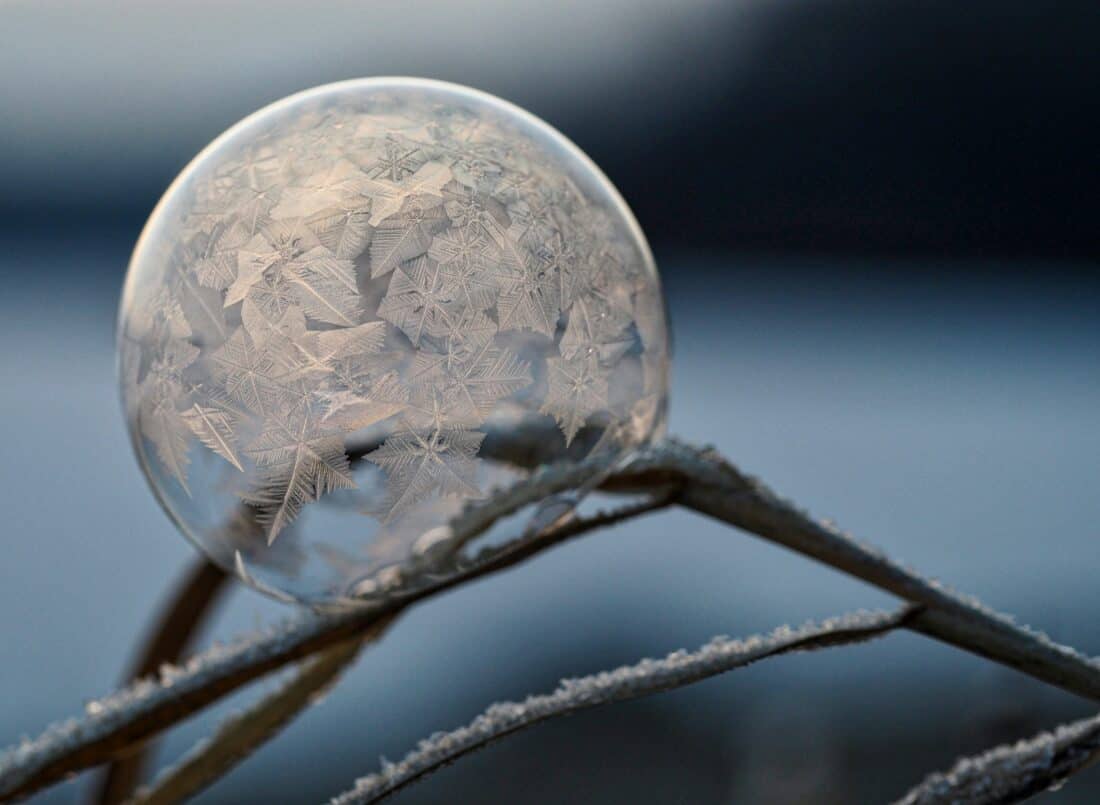
Also – if you have house plants near windows that get window frost or fern frost, you might notice cold damage. Move tender plants away from these windows to prevent damage.
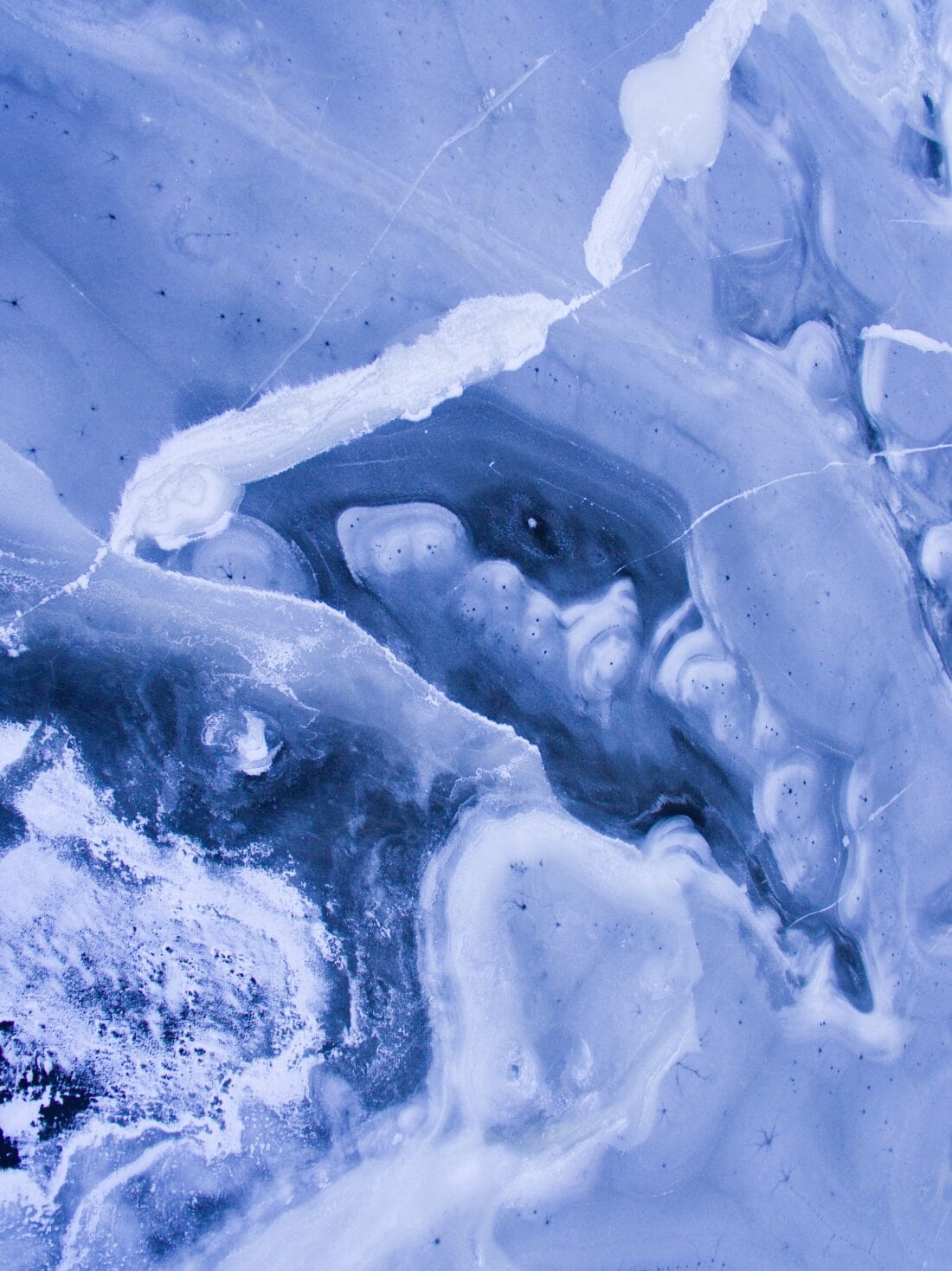
Fern Frost tends to be feathery or in swooping concentric shapes that indicate that there was a progression of cooling at different levels of the water.
Also, other interesting patterns can be appreciated in ponds and streams and even fountains left to run in cold temps. As new layers of water freeze and then contract, water beneath fills in, freezes, and causes new fissures and lines. These patterns can be quite spectacular. If you have a water feature in your garden, the patterns tend to be most visible at the shallow edges.
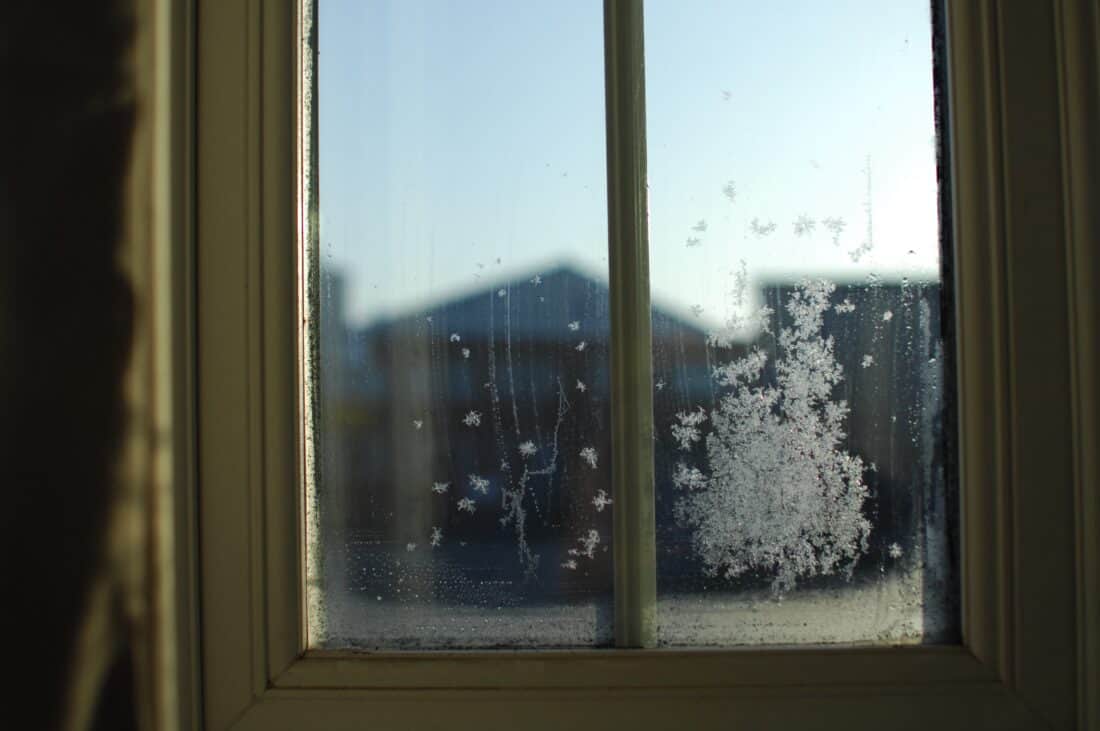
Black Frost (or killing Frost)
Not really a frost at all – this term refers to when the temperature falls too low for frost to form, and instead, plant tissues freeze, die, and subsequently turn black. This is common with many tender plants and vegetable garden plants like tropical plants or tomatoes and other nightshades, beans, squashes, and peppers. As the cold weather moves in with the fall and winter seasons, this is a very normal thing to have happen.
This is the frost that gardeners freak out about. When the first frost of the winter season occurs, the water in plant cells expands with a hard freeze and erupts, causing the plant to lose its structure and exhibit what we call frost damage.
If the garden frost is very early, you can provide your plants some frost protection by using fabric as a row cover or by covering them with a frost cloth or a cloche (this is a bell-shaped cover made of terracotta or glass). Old bed sheets work well for protecting plants from an early cold snap as well.
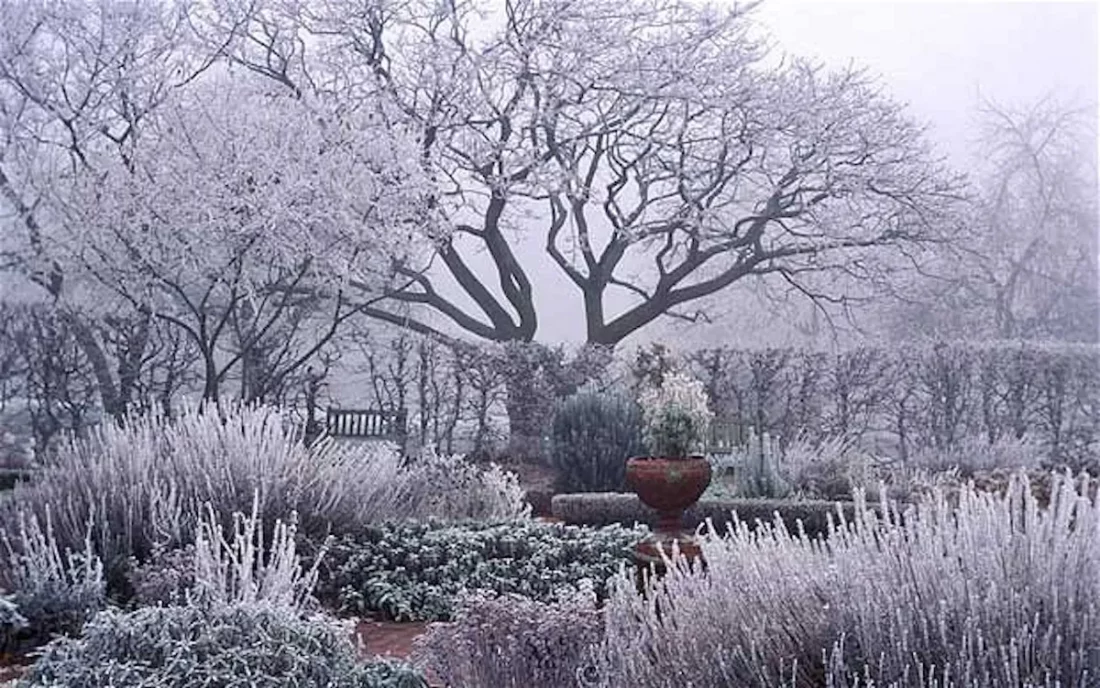
Know your Frost Dates
Knowing when your average first frost date is in your region will help you predict when you might have to move sensitive plants to safety (indoors).
All vegetable and flower seed packets will generally tell you how many days the plant needs to mature – if you don’t have that many days between your average last frost date in the spring and the first frost date in the fall, then you will not be able to successfully grow the plants without doing something to extend your season.
Cold frames can provide extra protection in colder months so that you can protect young plants in the spring and in the fall; you can keep the soil surface warm enough for vegetables to ripen fully and, if they are root vegetables, remain harvestable.
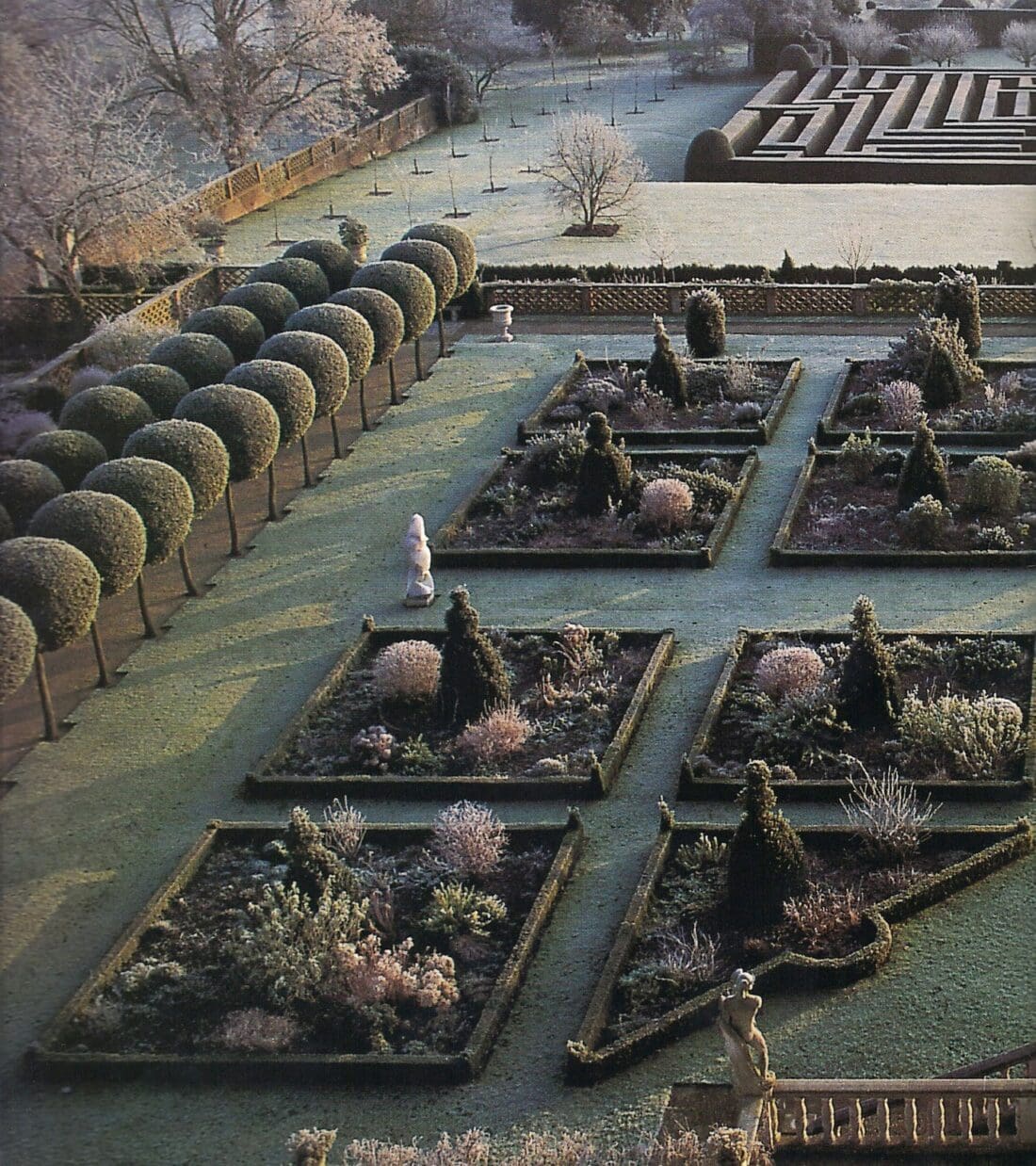
Plan and Plant for the Ice You Actually Get
Hoar frost turns a garden into a magical fairyland. Rime (which is thicker and heavier) tends to rip gardens apart. The difference is dramatic.
We garden writers and designers have a tendency to go on and on about planning for four seasons of beauty, and I’m not knocking that. But if you don’t ever get hoar-frost, you might need to make different considerations for your winter garden. If you get a lot of rime, you should also make special considerations.
Gardens with regular hoar frosts should plant and leave your grasses and sculptural plants untrimmed through the winter so you can enjoy their beautiful frosty shapes. Focus on forms that persist through the winter – like trimmed hedges and other shapely plants. But if you don’t get the hoar, I’d argue that it doesn’t matter so much.
Alternatively, if your area is prone to rime ice, you should cut back on the weak-limbed pines that will surely lose massive branches under the weight of the ice. Also, watch for any plants that might be near electrical or service lines. The weight of a tree or plant covered in ice will rip down wires and cables as they fail under stress.
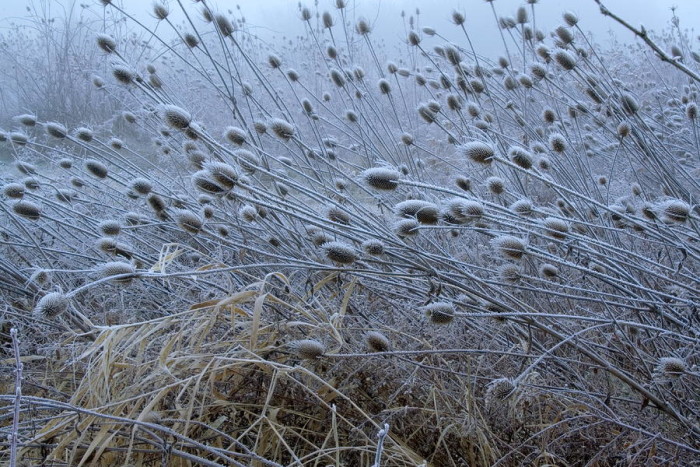
I am envious of places that get hoar-frost. My tattered and tired grasses get knocked down by the first snow – and never stand pretty with frost. I cut when it all becomes too much to look at. It’s a good reason to get outside on cold winter days. The messiness will eventually annoy me – but I do leave the rest for wildlife to use through the cold season.
How to make your garden beautiful and Looking ‘Winter-Good’
I gave up my hoar-frost hopes years ago, and instead, I think about what will look “winter-good”. That is with a pile of snow on it. Or, what will look good with just nothing, as we have our share of barren winters, too.
It’s worth pointing out that while you’re planning your winter garden, you should think about where your snow removal piles go. This is not a place to plant things that will easily be damaged under the cold dead weight. Plant shrubs that can be cut back hard in the spring or fall and perennials that die back to the ground.
Midway through any winter, I tend to feel defeated by the ever-growing pile of snow at the end of my driveway. But I think that being realistic about a New England winter – or whatever kind of winter you get – will help you get more out of your garden in all the seasons.
Do you get hoarfrost where you live? Would it make sense to plan for a magical wonderland?
Other Posts:
Share this post:
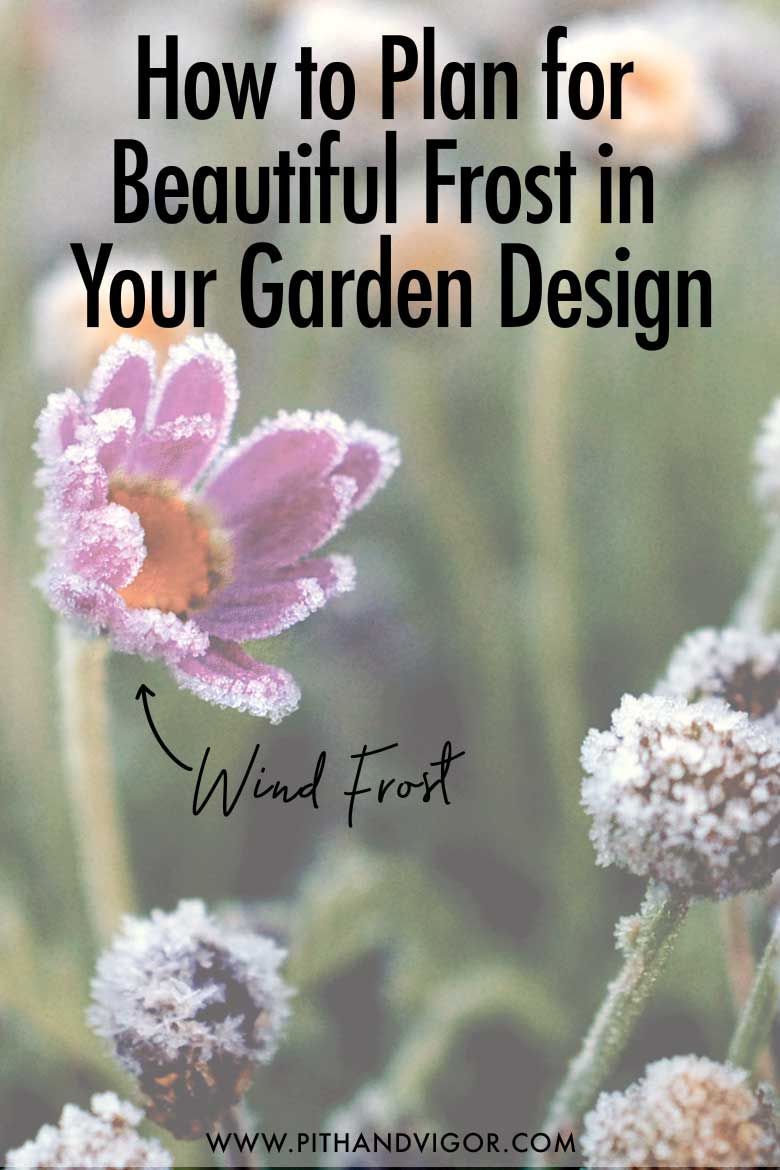

this is a great post, Rochelle. Thanks, Deborah
Hoar-frost turns the garden into a magical place. I never stop being amazed at the beauty of God’s creation. It is magnificent! Thanks for the wonderful post.
Susan
Nice post great information Rochelle. Love the winter garden always hoping for some snow…with in reason! – thanks!
Sadly, we rarely get frost of any kind out here (don’t hate me), but this winter we have 2 or 3 days of real, true frost (not quite hoar frost…but close). It was absolutely transformative…the garden went from being sad and soggy to glowing overnight!
That is so beautiful! I don’t think I’ve ever seen hoar frost! Winters here in Tennessee are always a little disappointing for me, since they usually involve rain instead than snow or frost. I would love to someday wake up to a garden filled with frost like that.
We had good conditions for glaze frost today in Massachusetts. Lovely observing my landscaping glazed in a layer of frozen water. Wicca and red trip fibroids especially fun! Not so lovely trying to avoid the glazed low hanging branches on my winding back roads.
I love hoar frosts – the more vicious the better! I lived in a small village in England that had amazingly beautiful frosts. I don’t think the area was purposely designed to take advantage of that, but it worked nonetheless. The village was/is very old and well preserved, with an ancient forest surrounding it. Look up Aldbury in Hertfordshire!